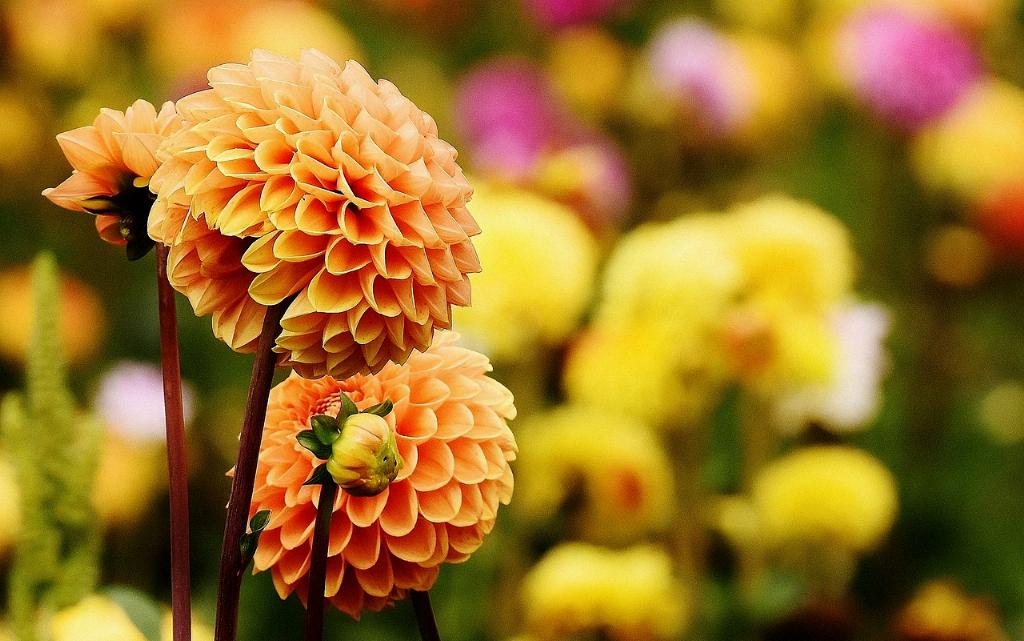Pruning your dahlia plants is a crucial step in ensuring they remain healthy and vibrant throughout the growing season. By trimming back spent blooms and excess foliage, you encourage new growth and improve the overall appearance of your garden. Here’s a detailed guide on how to prune your dahlias effectively.
1. Timing Is Key
It’s essential to prune your dahlia plants at the right time to reap the benefits. Wait until the plant has produced several sets of leaves and has started blooming before you begin pruning. This ensures that the plant has enough energy stored to support new growth.
2. Removing Spent Blooms
One of the primary reasons for pruning dahlias is to remove spent blooms. Deadheading not only improves the appearance of the plant but also prevents seed formation, directing energy back into the plant for more blooms.
3. Cutting Technique
When removing spent blooms, make sure to cut the stem just above a set of leaves or a leaf node. This encourages new growth to emerge from the sides, resulting in a bushier plant with more flowers.
4. Thinning Out the Plant
In addition to deadheading, thinning out the plant by removing some of the lower leaves and stems can improve air circulation and prevent diseases caused by moisture buildup. Focus on removing weak or crowded stems to allow the plant to channel its energy more efficiently.
5. Pinching Tips for Fuller Plants
If you desire a fuller, bushier dahlia plant, consider pinching the tips of the main stems once they reach a certain height. This encourages branching and lateral growth, resulting in a more compact and robust plant.
6. Pruning Dahlias for Size Control
For those looking to control the size of their dahlia plants, strategic pruning can help manage their growth. By cutting back certain stems or removing side shoots, you can maintain the desired height and shape of the plant.
7. Divide and Conquer
Dividing dahlia tubers is another form of pruning that helps rejuvenate the plant and promote healthier growth. Wait until the end of the season to dig up the tubers, divide them into sections, and replant them to ensure continued vitality.
8. Pruning for Overwintering
If you live in a region with harsh winters, pruning your dahlia plants before storing them for the winter is crucial. Cut back the stems to a few inches above the ground, dig up the tubers, and store them in a cool, frost-free location until the next growing season.
9. Pruning to Encourage Fall Blooms
To extend the blooming period of your dahlia plants into the fall, consider pruning them selectively in midsummer. By removing some of the secondary buds, you redirect energy to the remaining blooms, ensuring a spectacular display well into autumn.
10. The Importance of Consistent Maintenance
Regular pruning and maintenance are essential for the overall health and longevity of your dahlia plants. By staying on top of deadheading, thinning, and shaping the plant, you can enjoy an abundant and beautiful display of flowers throughout the growing season.
11. Observing Plant Responses
Each dahlia plant may respond differently to pruning, so it’s essential to observe how your plants react to the cutting techniques you employ. Pay attention to new growth patterns, flower production, and overall plant health to fine-tune your pruning practices.
12. Enjoying the Fruits of Your Labor
With proper pruning techniques and a bit of patience, you can watch your dahlia plants thrive and flourish, rewarding you with an abundance of colorful blooms and lush foliage. Take the time to care for your plants, and you’ll be greeted with a spectacular garden display that will bring joy and satisfaction for months to come.

